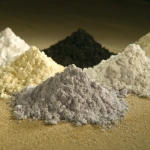INDONESIA: Blood boils as mud volcano swallows homes
THEY come in pairs - the prophets, pious and psychics - to cast spells, prayers and offerings on a vast mud lake that has subsumed nearly 700 hectares around the town of Sidoarjo, forcing more than 43,000 Indonesians from their homes.
Dwarfed by an enormous dyke ringing the centre of a mud volcano in East Java, they kneel before the bubbling ooze, with reverential followers held back at security checkpoints.
Donning a black headscarf and a Javanese blend of Islam and mysticism, Sri Sunarti scatters water gathered from the grave of a 17th-century Muslim missionary. An ancient spirit, Semar, had told her she could halt the mud with prayer, she says.
Others do not share her faith. Excavators continually strengthen and heighten the main dam as plumes of toxic gas mushroom overhead, with hot mud shooting up to 30 metres into the air.
Authorities have barred more than two citizens from entering the site at a time, and then they may only walk a few metres along an outer wall, one kilometre from the central dam. The sacrificial throwing of live cows, goats and chickens into the mud has been banned.
One year ago this Tuesday, a gas-exploration well part-owned by the Australian mining giant Santos blew, sending a geyser of mud and toxic gas into the air. Nearby villages and factories were flooded, then a big highway and railway were covered, and later East Java's main gas pipeline ruptured.
Despite all attempts to plug the flow - drilling relief wells and even dropping concrete balls into its centre - more and more mud spurts from the volcano, around 1 million barrels each day. The rising tide covered thousands more homes in March.
It is the region's worst social and ecological mining disaster, according to a leading Indonesian environmental watchdog, Walhi. The displaced await compensation, mitigation efforts are farcical and arguments continue over who will bear the multibillion-dollar cost.
There is no end in sight. Optimists hope the mudflow could dissipate in 30 years, but experts suggest it may continue for centuries. Twenty-three kilometres of earth dams have been built in an unsuccessful attempt to contain the mud, 20 metres deep in parts, and channel it into the nearby Porong River, then into the sea.
When the Herald visited the site last week, just a trickle of ooze dribbled from one of eight large pipes above the river. The director of operations of the mud disaster team, Sofyan Hadi, admits they are pumping only a fraction of what emerges from the volcano because the wrong pumps were installed.
"They are used for water, not for mud," he said.
The only short-term proposal is bigger, better pumps, with little immediate prospect of fulfilling the instructions of the President, Susilo Bambang Yudhoyono, to "kill" the mudflow.
Arguments about fault and liability have spread into Dr Yudhoyono's cabinet. The company that owns 50 per cent of the well, Lapindo Brantos, belongs to the family of the Minister for People's Welfare, Aburizal Bakrie. Thirty-two per cent of the joint venture was held by another Indonesian company, Medco, with the remaining 18 per cent held by Santos.
The Adelaide-based firm has now doubled its provisions for potential compensation payments to $89 million - 18 per cent of the predicted "mud management" costs - but admits there are no guarantees it will not blow out.
Owing to the "complexity of the incident and the dynamic nature of the ongoing work, there is significant uncertainty surrounding these issues", Santos has warned in a report to shareholders.
In a presidential decree last month, Dr Yudhoyono said his government would pay the billions in infrastructure costs arising from the mudflow, including moving transport links. Direct mitigation of the mudflow and buying the land and houses it covers would be Lapindo's responsibility - an estimated $540 million.
Parliamentarians have threatened to overturn the decree, complaining that all costs should be met by the miners. Walhi describes it as a political conspiracy to avoid corporate responsibility.
A Santos spokesman, Chris Bennett, says the company admits no liability and is aware of the political dynamics. But all requests to aid the clean-up program have been met "given the magnitude of the social dislocation". As a minority shareholder, Santos had limited influence, Mr Bennett says, urging a greater focus on long-term "mud mitigation to prevent further social, economic and infrastructure degradation".
Mr Bakrie has denied that the volcano was caused by the gas bore - blaming an earthquake two days earlier near Yogyakarta, more than 200 kilometres away - but says his company will compensate local victims because of "Indonesian values".
His claims have been undercut by the third partner in the well, Medco, which said Lapindo's drillers had been negligent in not inserting a casing around the gas bore, which would have enabled the flow to be plugged after the drill hit a huge mud bubble, pressurised by gas underneath.
Medco launched a negligence lawsuit against Lapindo in the US, but the case will not reach court after a Bakrie company bought out Medco's share of the well, and its liabilities, for a token fee last month.
Last year Indonesia's Finance Minister blocked the Bakrie group's attempt to sell Lapindo to a shelf company offshore, believing it was an attempt to evade responsibility for the incident.
Instead, Lapindo has launched a public relations offensive, funding studies and a geological seminar. Only geologists who said the volcano was a natural phenomenon were invited to contribute. If consensus emerges of a natural disaster, Lapindo argues, the matter should be a government, not a corporate responsibility.
A police investigation has determined that negligence was to blame and recommended 13 Lapindo officials face criminal charges. Local prosecutors seem reluctant to proceed, sending the brief of evidence back twice for revision.
The head of the Disaster Research Centre at the Surabaya Institute of Technology, the geologist Amien Widodo, also has no doubts it was the failure to install a casing along the drill shaft that caused the disaster. "Because they didn't use a casing, the mud went wild," he says.
Sidoarjo's catastrophe is "just beginning", he says, and with no known way to halt the flow it could last hundreds of years.
Meanwhile, most of the more than 43,000 victims await compensation, many in ramshackle, open-air refugee camps. Lapindo says it has paid more than $180 million towards the clean-up, evacuation, and rent and food relief. But only 185 people so far have been compensated for the loss of their homes.
The problem, according to Lapindo, is that locals must produce evidence of land ownership and most lack official certificates.
The village of Balongnongo was the first hit by the mud. Zaenul, a mechanic, did have land title and has received an initial payment, but he says no compensation can replace the daily village life of community celebrations, traditional music and Koran readings.
His family is scattered in rented homes across the district and his two children must travel 20 kilometres to primary school.
"It was my pride to have built a house from my own sweat, but now it is gone," he says, adding: "What we need is a place to rest, a house of our own."
- 107 Energy
- 183 Environment
- 185 Corruption
- 190 Natural Resources



